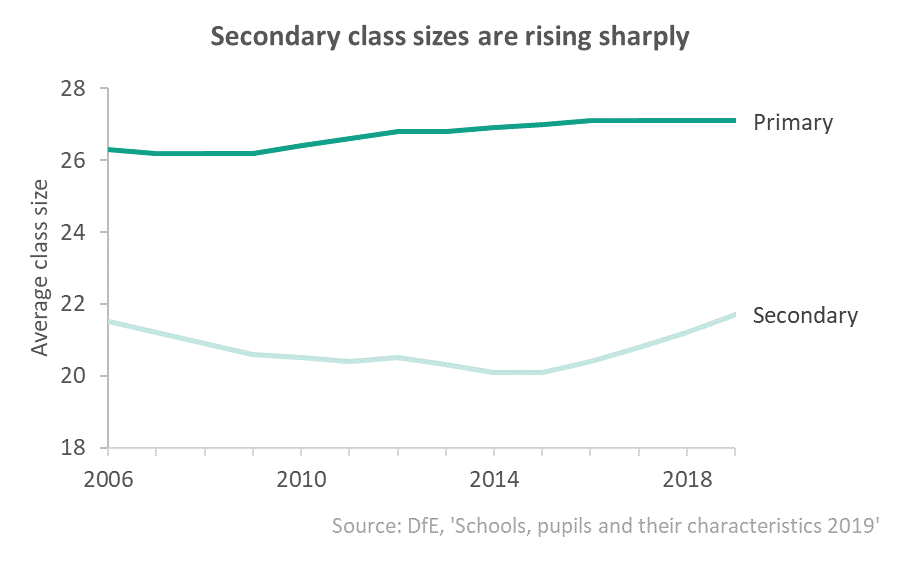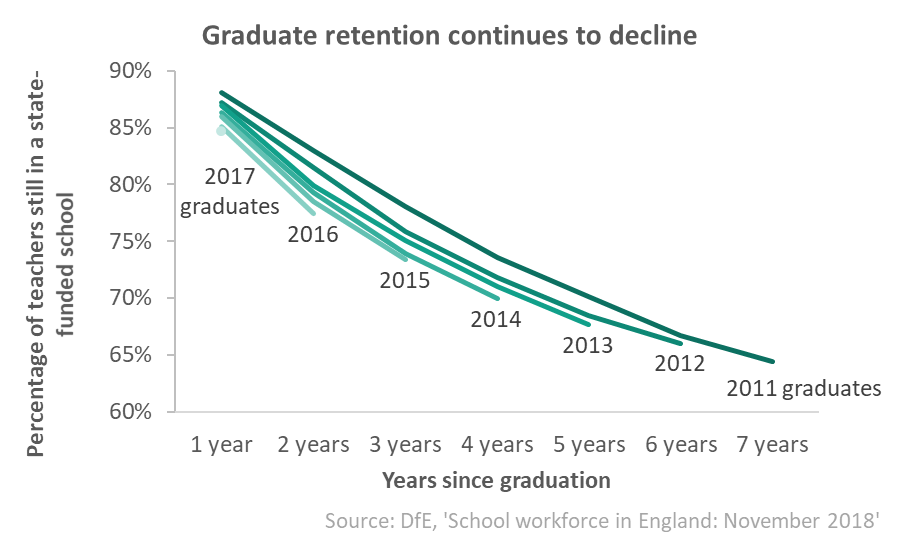The Department for Education’s latest figures on the school workforce show a secondary school teaching workforce in crisis. Secondary pupil numbers are expected to grow by around 15 percent between 2016 and 2026, with the bulk of the growth happening in the next couple of years, yet the number of secondary teachers continues to fall. Despite the government’s best efforts, today’s statistics are consistent with the message of TALIS 2018: secondary teachers are unhappy with their jobs and are quitting the profession at an increasing rate.
The headline figures show that the total number of teachers has grown since 2017 but that is due to increasing numbers in primary and special schools. In secondary schools, the number of teachers has declined at a steady rate since this time series began in 2010 and that trend continued in 2018.
The immediate consequence of a declining workforce and growing pupil numbers is that class sizes have risen sharply in secondary schools. From an average of 20.1 pupils per class in 2014, there are now an average of 21.7 pupils per class and the proportion of classes with more than 30 pupils has increased by 50 per cent. Class sizes have returned to levels similar to 2006, but it is important to bear in mind that the school funding context has shifted considerably in the intervening years.
The combination of fewer teaching staff and more students may partially explain why workloads do not appear to have dropped in recent years, despite the department’s best efforts. The department has worked hard to improve the retention of young teachers in the profession through the Workload Challenge, launched in 2014, the creation of a workload advisory group, the publication of a workload reduction toolkit in 2018, and the publication of the Teacher Recruitment and Retention Strategy in 2019. However, last week’s release of the OECD’s TALIS survey of teachers found that, despite these efforts, full-time, secondary teachers’ working hours have risen from 48.2 hours per week in 2013 to 49.3 hours in 2018. Unsurprisingly, their job satisfaction declined over the same period.

These latest statistics from the School Workforce Census show the effect on young graduates joining the teaching profession: dropout rates are rising and each year’s graduates are more likely to leave the profession than the previous year’s. Today’s release shows that 85 per cent of 2017 graduates were still in the profession after 1 year, compared to 88 per cent of 2011 graduates. That means over 3,600 NQTs quit teaching in state-funded schools just a year after starting out in the profession. If the retention rate had remained at the 2011 level, the profession would have kept 820 of those graduates.

The government will be hoping that the introduction of retention payments in the Recruitment and Retention Strategy will have an impact on those figures but, even if they are successful, that leaves a gap in the stock of teachers that will need to be closed. Recruitment is still missing targets every year so it may be time to consider what alternative strategies there are to supplement the recruitment and retention push.

